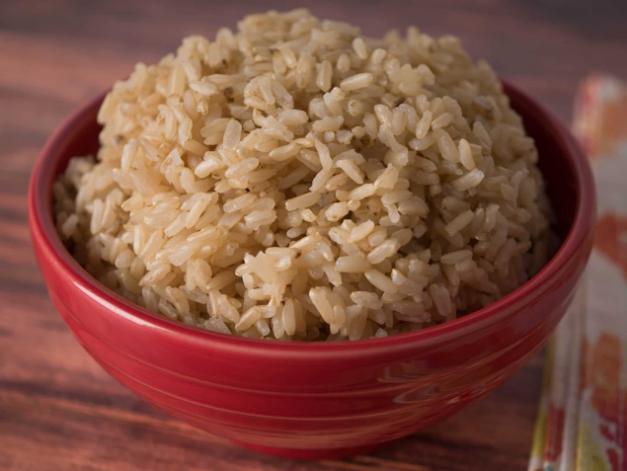When your body is exposed to elevated levels of cortisol or produces too much of it, you may suffer from Cushing’s syndrome. Symptoms of the illness includes weight gain, high blood pressure, fatigue, depression, skin changes, diabetes and even osteoporosis. By making changes to your diet, you might be able to reduce the severity of these reactions. While there is not an official Cushing syndrome diet, key nutrients in certain foods may help.
Diet Tips for Cushing Syndrome
1. Consider Increasing Calcium Consumption

To reduce your risk of developing osteoporosis, make sure you are consuming the recommend daily intake of 1,000 milligrams of calcium. This will assist in maintaining bone mass. Leafy-green vegetables like turnip greens, bok choy and turnip greens are good sources. You can also consider adding fortified nondairy milk, low-fat dairy, calcium-fortified cereal, fortified juices and calcium-sulfate fortified tofu to your diet.
2. Watch Sodium Intake
If you are considering starting a Cushing syndrome diet, try lowering your sodium intake. Too much sodium can lead to high blood pressure. The illness already raises your risk, so you should strive to reduce your chances. Limit your consumption of processed foods like pizza, cheese, canned soups, deli meat, breads and salty snack foods. Instead add foods high in fiber. This would include fresh vegetables and fruits, and sources of unsaturated fats such as nuts and fish.
3. Don't Get Too Many Calories

Weight gain is a common symptom of Cushing’s syndrome. To help curb your appetite and reduce chances of weight problems, add high fiber and water-rich foods like vegetables and fruit. If you choose ones that are low in energy density, you will be able to eat more, making you feel full without packing on the calories. More sugar or fat content in a food raises its energy density level and increases your risk of gaining weight.
4. Control Your Blood Sugar
If you are designing your meals around a Cushing syndrome diet, you should eat to control your blood sugar. The illness increases the sugar in your blood, thus raising your risk of diabetes. Foods rich in carbohydrates but carry a low glycemic load have less an impact on your levels of blood sugar. Types of food to consider include apples, grapefruit, beans, oranges, nuts, pears, carrots, peaches, peas, couscous, pumpernickel bread and whole-grain bread.
5. Reduce Cholesterol

When dealing with Cushing’s syndrome, you should monitor your cholesterol levels and keep them at healthy levels. Your intake should be limited to 300 milligrams or less per day. Stay away from trans-fat foods, such as commercially processed or baked items like cookies, cakes and crackers. Eat lean cuts of chicken, pork or beef. Cook with canola or olive oil. Limit your butter intake. Increase your consumption of plant-based foods, such as fresh vegetables, fruits, legumes and whole grains.
6. Increase Vitamin D Intake
Ideally, a Cushing syndrome diet would be rich in vitamin D. Without it, your body cannot process and absorb the calcium it needs. While you can get the vitamin from sunlight exposure, you may need to add foods fortified with it, such as cereal, juice or milk. Fish like sardines and salmon are high in vitamin D. If you are under 50, you need about 5 micrograms of the vitamin every day. Over 50, you should increase your daily intake of vitamin D to 15 micrograms.
7. Choose Carbohydrates Carefully

Because your risk of elevated blood sugar levels increases with Cushing’s syndrome, you should take extra care of which carbohydrates you eat. Your best choice would to consume fiber-rich carbs with lower glycemic levels. Good sources include whole grains, brown rice, whole-wheat pasta, whole-wheat bread, and non-starchy vegetables and fruits. Because it takes your body longer to digest these foods, you absorb the glucose at a steadier rate, thus not spiking your sugar levels.
Sample Meals
You can easily combine foods to create a delicious Cushing syndrome diet. For example, breakfast could include a glass of vitamin-D fortified skim milk, a toasted slice of whole wheat bread spread with a little bit of almond butter, orange slices and a hardboiled egg. Consider eating soup and salad for lunch. You can make a low-sodium soup with homemade vegetable broth and whole-wheat pasta and accompany it with a spinach salad sprinkled with sunflower seeds, low-fat cheddar slices, olive oil and white vinegar and toss in non-starchy vegetables. For dinner, you could bake a piece of salmon and serve it on a bed of brown rice with a side of steamed broccoli. Finish the meal with sliced fruit and a serving of low-fat, vitamin-fortified cottage cheese.
Food Remedies for Cushing Syndrome
1. Ginseng
There are herbal remedies you should consider adding to a Cushing syndrome diet. For example, ginseng is known for its highly effective medicinal properties. It helps reduce stress and at the molecule level teaches your body how to function in a healthy way. If you add it to your diet, you may notice you handle stress more effectively. Other herbs like ginger can help alleviate the severity of several symptoms, too.
2. High-protein Foods
Foods rich in protein and amino acids seem to have a positive impact on the neurotransmitter functions of your body. This can lead to increased hormone production, which helps fight the symptoms related to Cushing’s syndrome. Good sources include yogurt, cheese, lean meat, beans and legumes.
3. Spinach
Cushing’s syndrome can interfere with your body’s calcium, potassium and magnesium levels. Eating spinach can negate these effects because of its high content of these nutrients. In addition, it contains antioxidants and has medicinal qualities that keep hormone levels in balance.
4. Avocados
A common symptom of Cushing’s syndrome is inflammation. It can affect you in one specific area or all throughout your body. Foods like avocado, that are rich in omega-3 fatty acids, can help combat and eliminate the inflammation.
5. Oily Fish
Salmon, tuna and mackerel are good sources of omega-3 fatty acids. Eating these fish on a regular basis can help reduce the symptoms of Cushing’s syndrome, while reducing inflammation and stress levels in your body.
